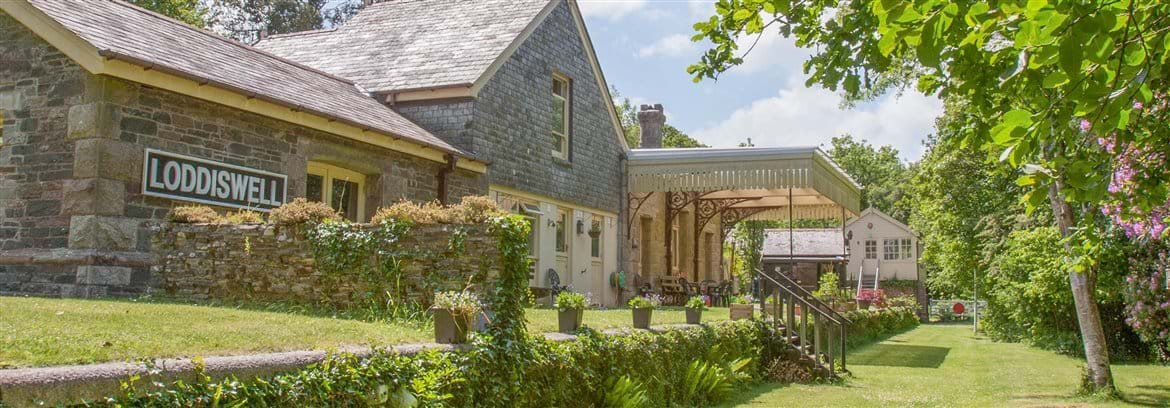The History
Beginnings.
The principal station buildings at Loddiswell date back to 1893 - around the latter part of the glory days of steam locomotives. Along with its sister stations at Avonwick, Gara Bridge and the terminus at Kingsbridge, the buildings were designed by the renowned Victorian railway architect William Clarke. This Great Western Railway branch line became affectionately known as 'The Primrose Line' - particularly apt given the abundance of these springs flowers here.
Closure.
In its 70 years of service, the station saw a wide variety of activity from goods haulage, local commuting and tourism. Lack of use, coupled with new more efficient alternative forms of transport made the line's future unsustainable. Despite much local opposition, the entire line became a victim of the railway reforms (around the time of Dr Beeching's report) and operations ceased on 16th September 1963; this station had already been downgraded to 'halt' status in 1961.
Visitors.
At the beginning of the 20th Century, the station was used by a group of refugee French Monks who used the railway to transport an entire 'flat pack' monastery which they proceeded to build at nearby Wood Barton. During the Second World War, the line was a strategic transport link and General (later Field Marshal) Montgomery was recorded as passing through visiting top secret preparations for Allied troops before D-Day. Agatha Christie's novel "Sleeping Murder" appears to feature the station in the guise of 'Woodleigh Bolton', the author, and many other famous celebrities of the era, would certainly have passed through on route to the exclusive Burgh Island Hotel at Bigbury-on-Sea.
Holidays.
Self-catering holidays have featured significantly in the history of Loddiswell Station; throughout the 1950's the station was amongst the first to host Camping Coaches. Old rolling stock was converted to provide basic accommodation and they were parked in the station's siding, with the station's WC facilities being made available for the use of holiday makers.
Today.
After the closure of the line the station buildings quickly fell into disrepair as material of value was stripped. In the early 1970's the station buildings were saved from ruin and converted into a family home. Many locals and visitors alike remember Cream Teas being served from the old platform by the new owners. Further extensive renovations including construction of the present replica Signal Box building were undertaken in the early 2000's. We moved here with our young family in late 2013. After 12 months of our own hard work, we had transformed The Signal Box into well-appointed and welcoming guest accommodation, thus beginning the next chapter of this well-loved little station's history.

